Certified Jenkins Engineer
Jenkins Administration and Monitoring Part 1
Demo Job Configuration History Plugin
In this guide, you’ll learn how to install, configure, and use the Jenkins Job Configuration History plugin. This powerful plugin:
- Automatically archives every job and system configuration change
- Provides side-by-side diff views for quick comparison
- Restores older versions and recovers deleted jobs
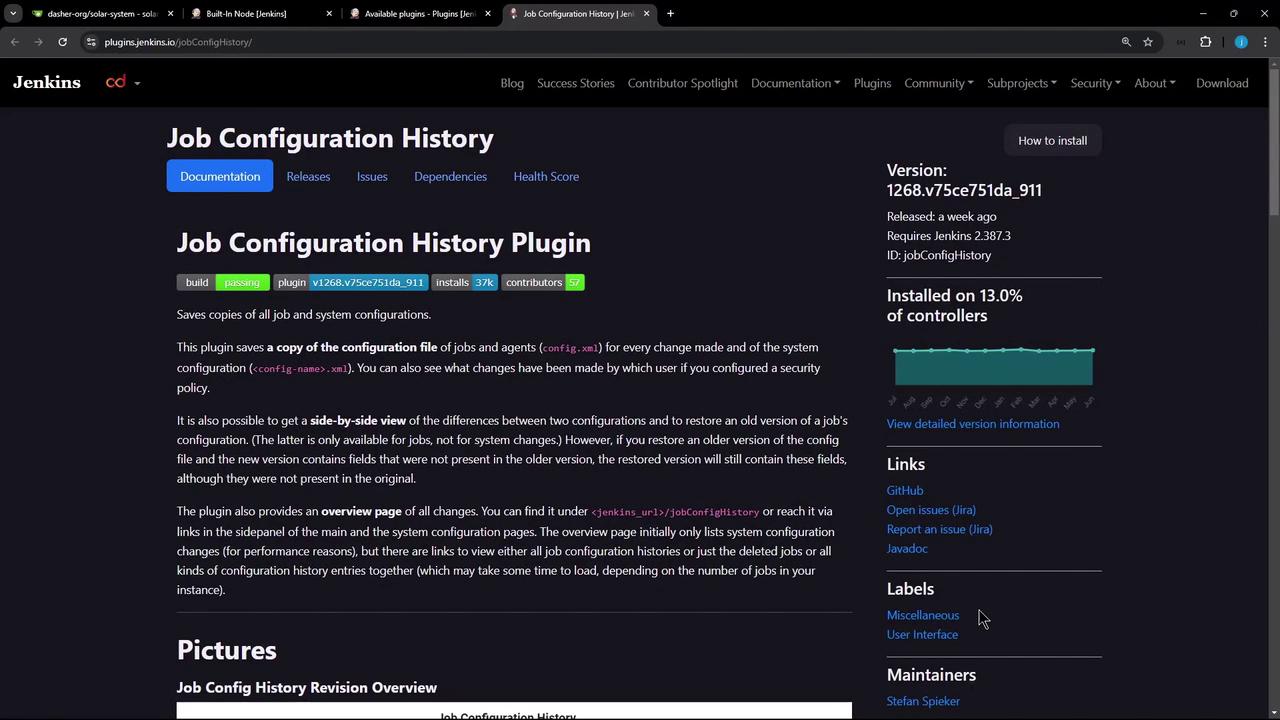
Plugin Features
| Feature | Description | Example Use Case |
|---|---|---|
| Automatic Backups | Saves config on every change | Track every build-job tweak |
| Diff Viewer | Side-by-side comparison of configurations | Identify exactly what changed between builds |
| Restore & Rollback | Revert to any prior version or recover deleted jobs | Roll back failed changes |
| System Config Tracking | Monitors global Jenkins settings | Audit security or plugin updates |
1. Installing the Plugin
- Navigate to Manage Jenkins > Manage Plugins.
- Under the Available tab, search for Job Configuration History.
- Select the plugin, click Install without restart, then restart Jenkins:
- Via Manage Jenkins > Restart
- Or manually restart the Jenkins service
Warning
Keeping every configuration change can consume significant disk space over time. Monitor the storage and adjust limits in the plugin settings section.

2. Navigating Configuration History
Once Jenkins restarts, a new Job Config History link appears in the dashboard sidebar. Click it to:
- View All Configuration History
- Filter by Job Changes, System Changes, Created Jobs, or Deleted Jobs
- Inspect individual revisions and metadata
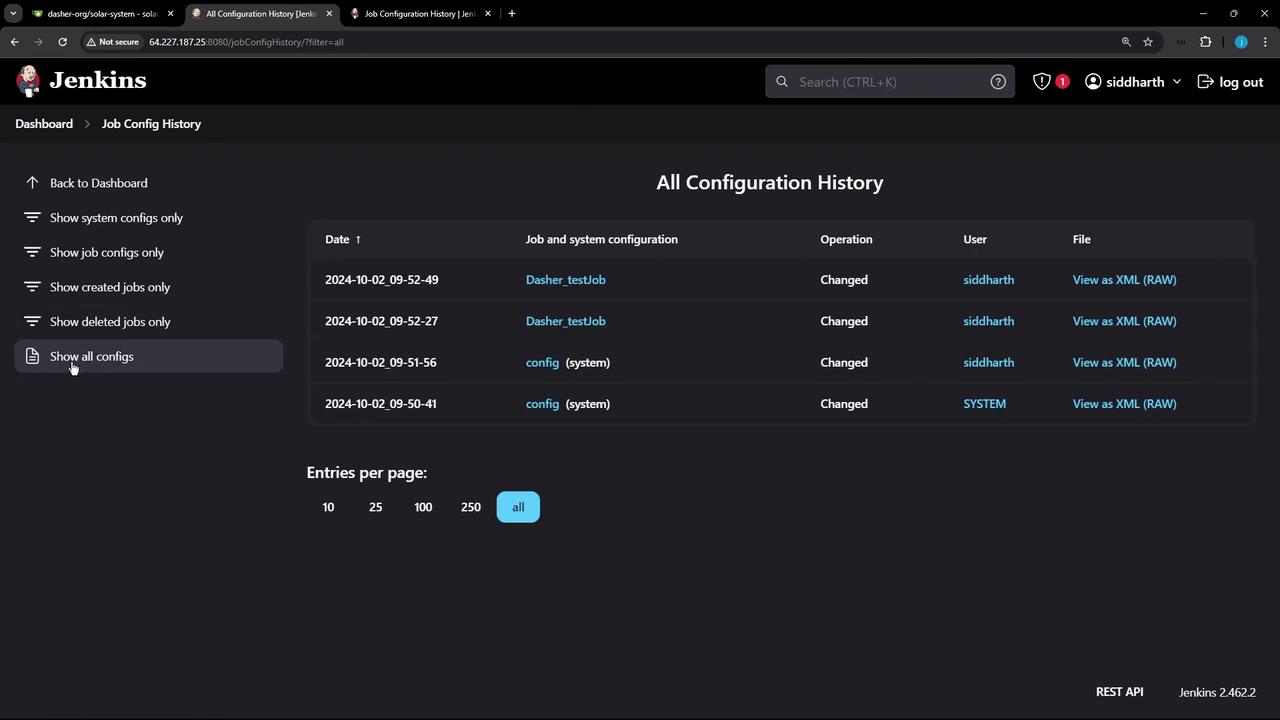
3. Tracking Job Configuration Changes
Follow these steps to see how changes are recorded:
- Open Dasher_testJob from the Jenkins dashboard.
- Click Configure, disable any restriction rules, then Save.
- In Build, add an Execute Shell step:
echo "Hello Testing a new Plugin" - Save and select Build Now.
- Re-enter Configure, add:
sleep 5 - Save and Build Now again.
Return to Job Config History, click Show All Configs, and compare revisions:
<!-- First revision -->
<command>echo Hello Testing a new Plugin</command>
<!-- Second revision -->
<command>echo Hello Testing a new Plugin</command>
<command>sleep 5</command>
3.1 Per-Job History and Diff View
To inspect a single job’s history:
- Open Dasher_testJob > Job Config History
- You’ll see a list of revisions with user, timestamp, and operation
- Click Show Difference for a side-by-side XML diff
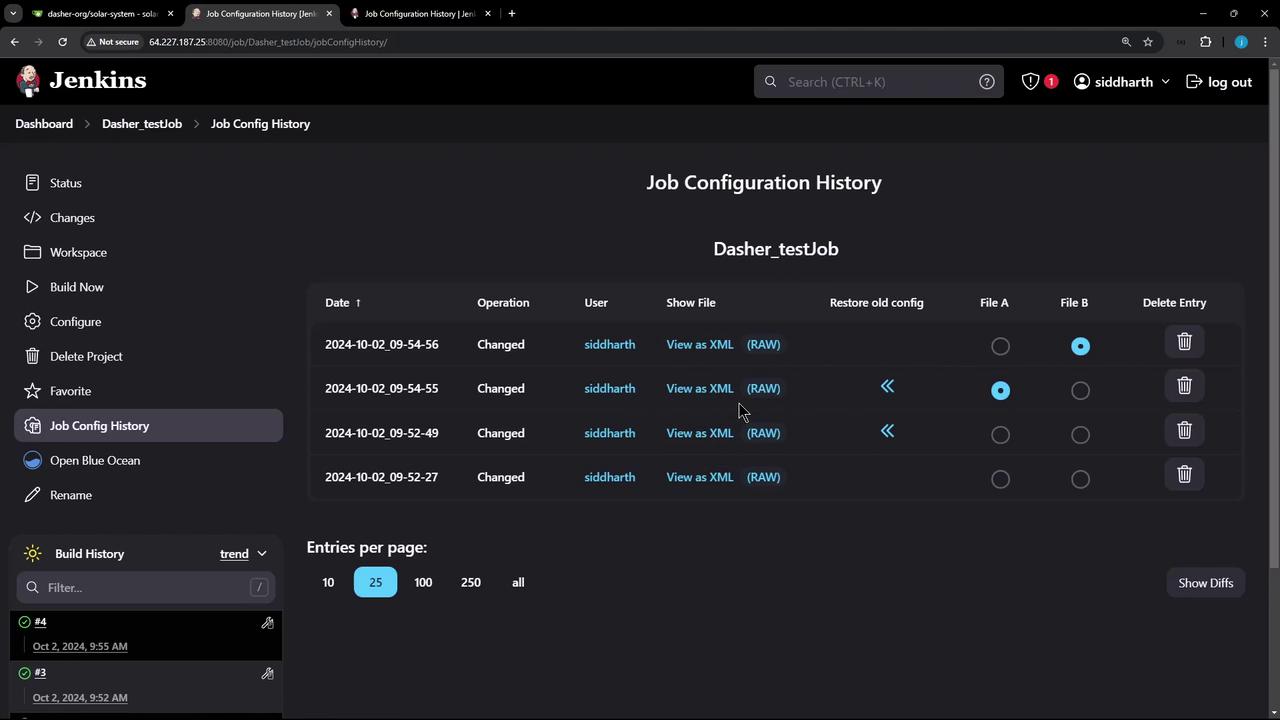
<!-- Older configuration -->
<command>echo Hello Testing a new Plugin</command>
<!-- Newer configuration -->
<command>echo Hello Testing a new Plugin</command>
<configuredLocalRules/>
<hudson.tasks.Shell/>
<command>sleep 5</command>
<configuredLocalRules/>
To revert to a previous version, click Restore next to the desired entry and confirm. Jenkins will apply the older config.xml and reflect only the restored build steps:
echo "Hello Testing a new Plugin"
4. Restoring Deleted Jobs
The plugin logs deletions, allowing you to recover lost jobs:
- Delete Dasher_testJob from the dashboard.
- Go to Job Config History and filter by Deleted Jobs.
- Find the delete event and click Restore to recover the job.
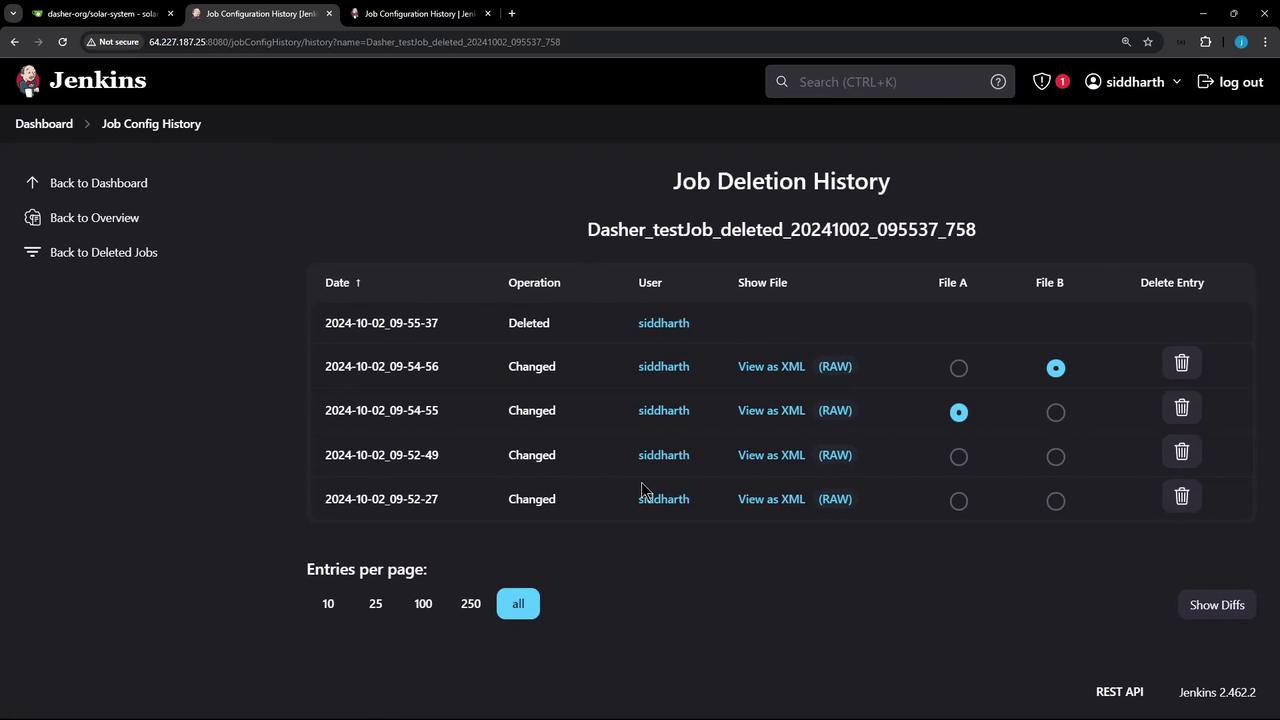
5. Plugin Settings and Storage Location
Configure history storage and limits:
- Navigate to Manage Jenkins > Configure System.
- Scroll to Job Config History settings:
- History Root Directory (default:
/var/lib/jenkins/config-history) - Max entries per config
- Max age of entries
- History Root Directory (default:
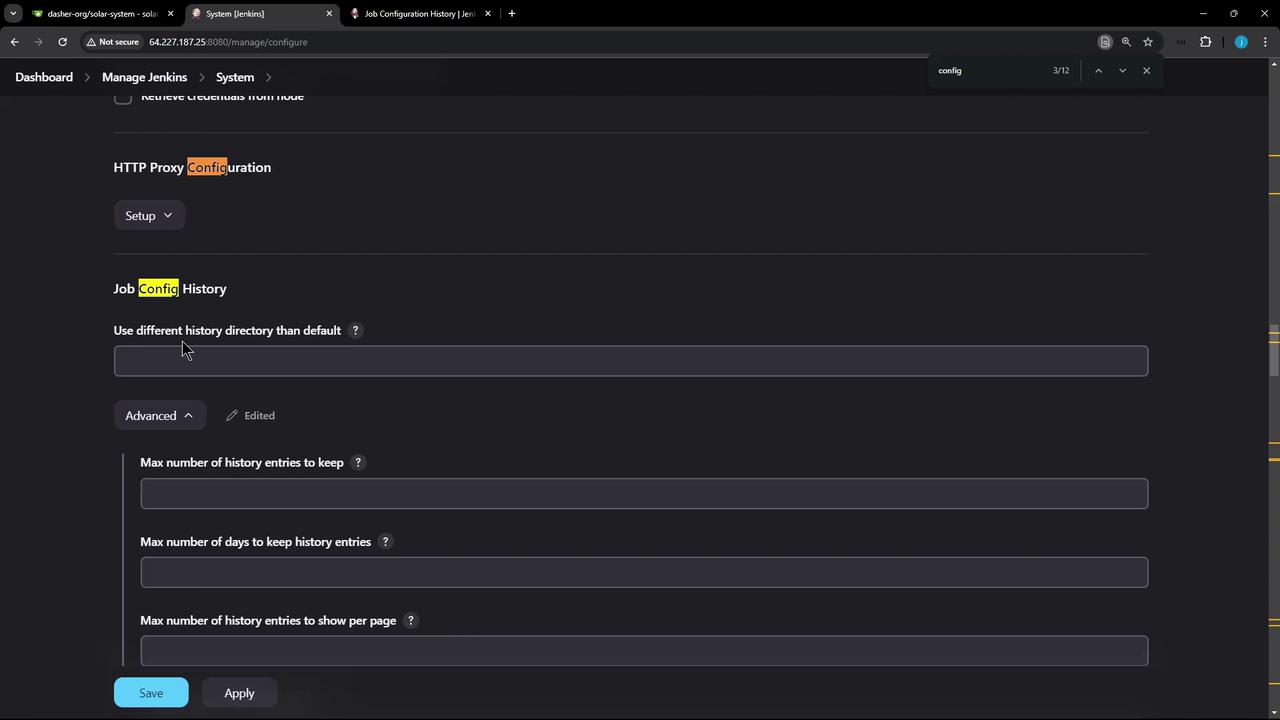
On the controller:
cd /var/lib/jenkins
ls -l
cd config-history/jobs/Dasher_testJob
ls -l
# drwxr-xr-x 8 jenkins jenkins 4096 Oct 2 09:55 .
Each timestamped folder includes config.xml and history.xml:
<?xml version='1.1' encoding='UTF-8'?>
<hudson.plugins.jobConfigHistory.HistoryDescr plugin='[email protected]_911'>
<user>siddharth</user>
<userId>siddharth</userId>
<operation>Changed</operation>
<timestamp>2024-10-02_09-52-27</timestamp>
</hudson.plugins.jobConfigHistory.HistoryDescr>
With this setup, you’re equipped to track, compare, restore, and audit Jenkins configurations effortlessly.
References
Watch Video
Watch video content